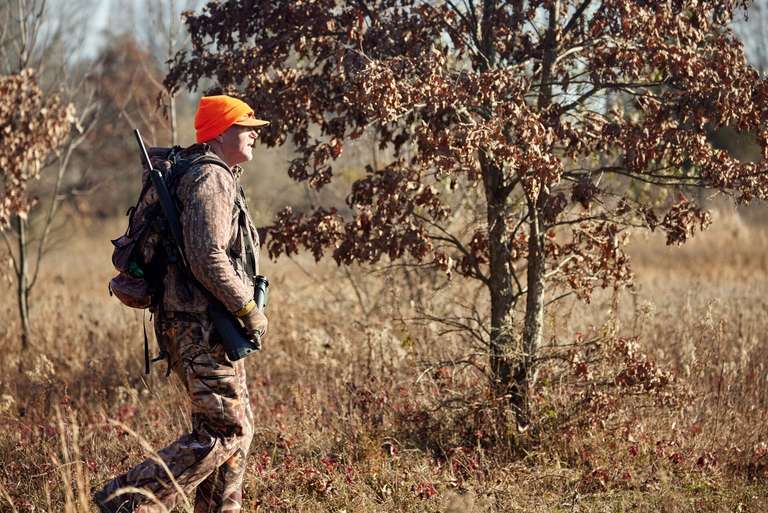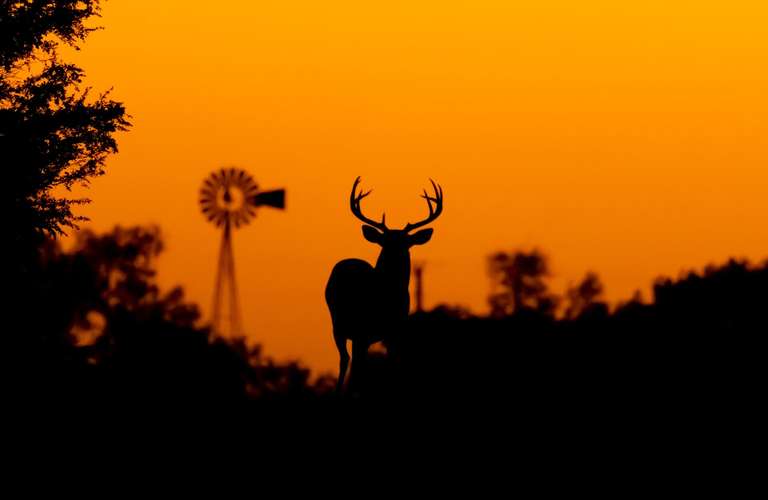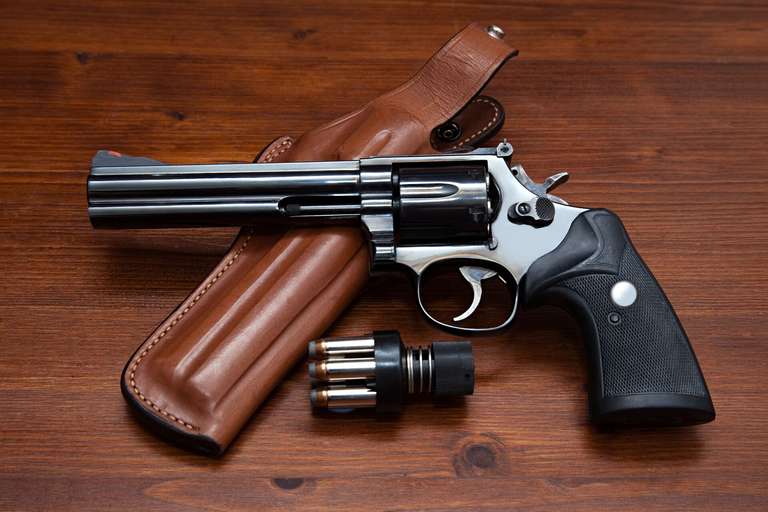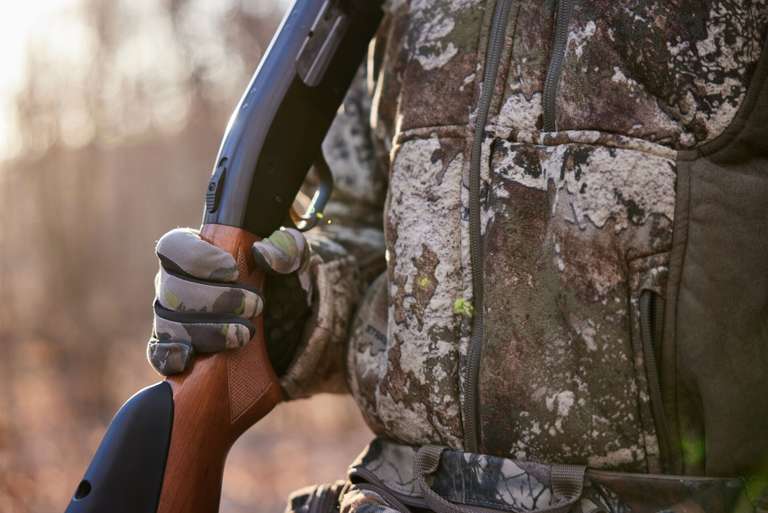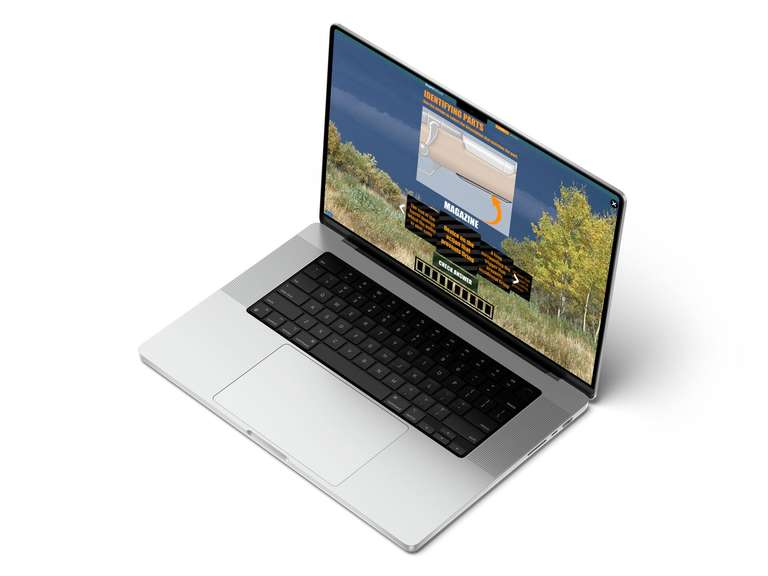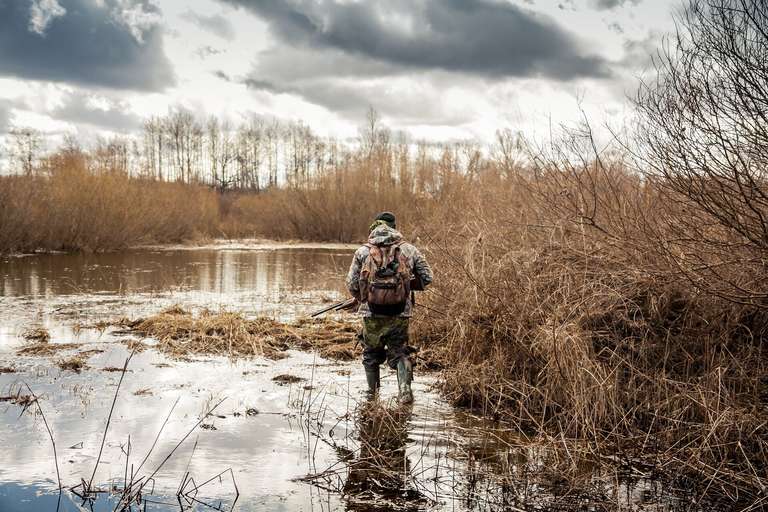What Is a Safe Zone of Fire? (Look Before You Shoot)
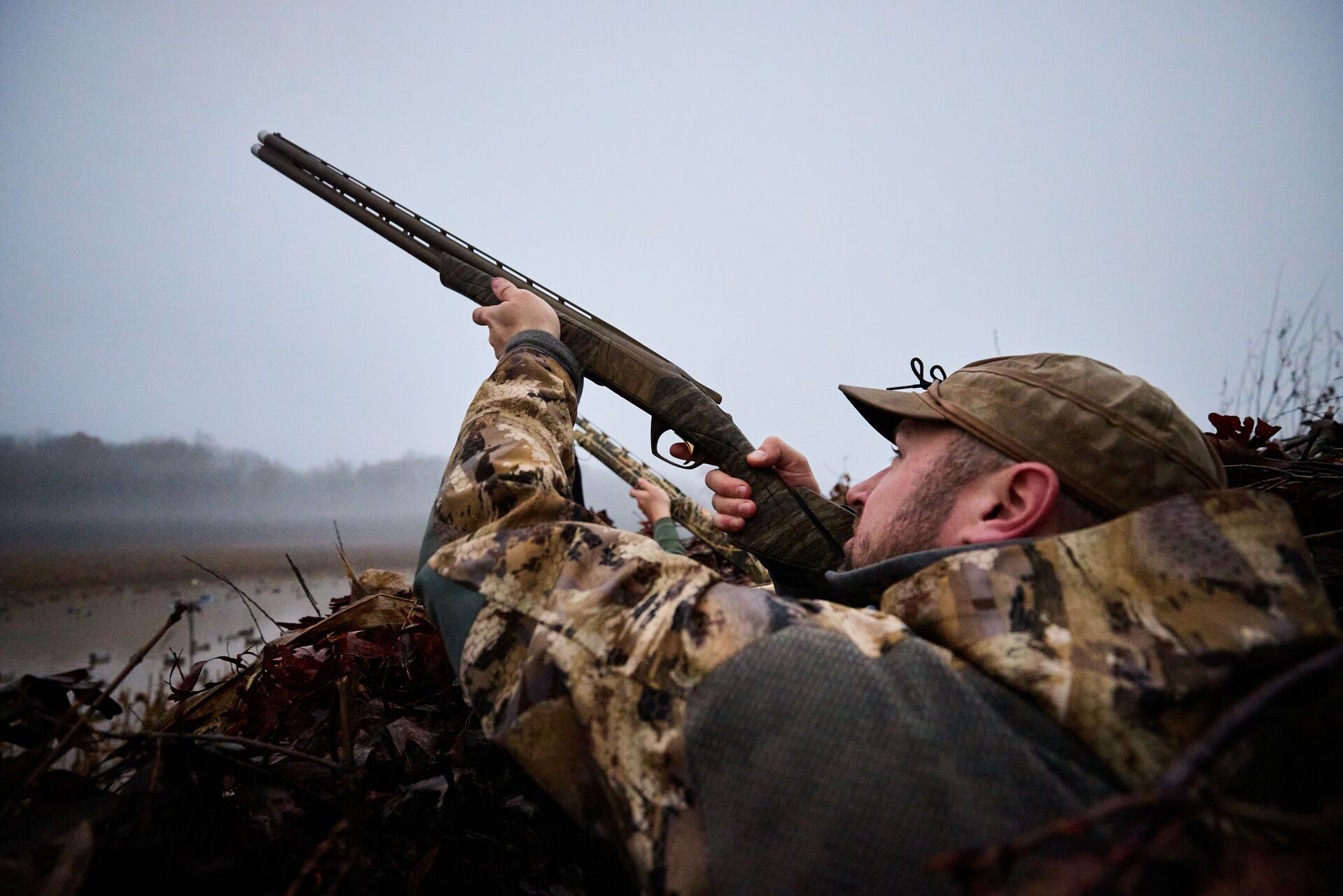
Every time you take a firearm or bow into the field, safety becomes your top priority. Aside from the fundamental rules of firearm safety, hunters should always ask themselves, "What is a safe zone of fire."
Whether you’re a backcountry solo hunter chasing elk in Montana or a group working Nebraska fields for pheasants, knowing your safe zone of fire helps prevent accidents. It ensures you and your friends return home safely.
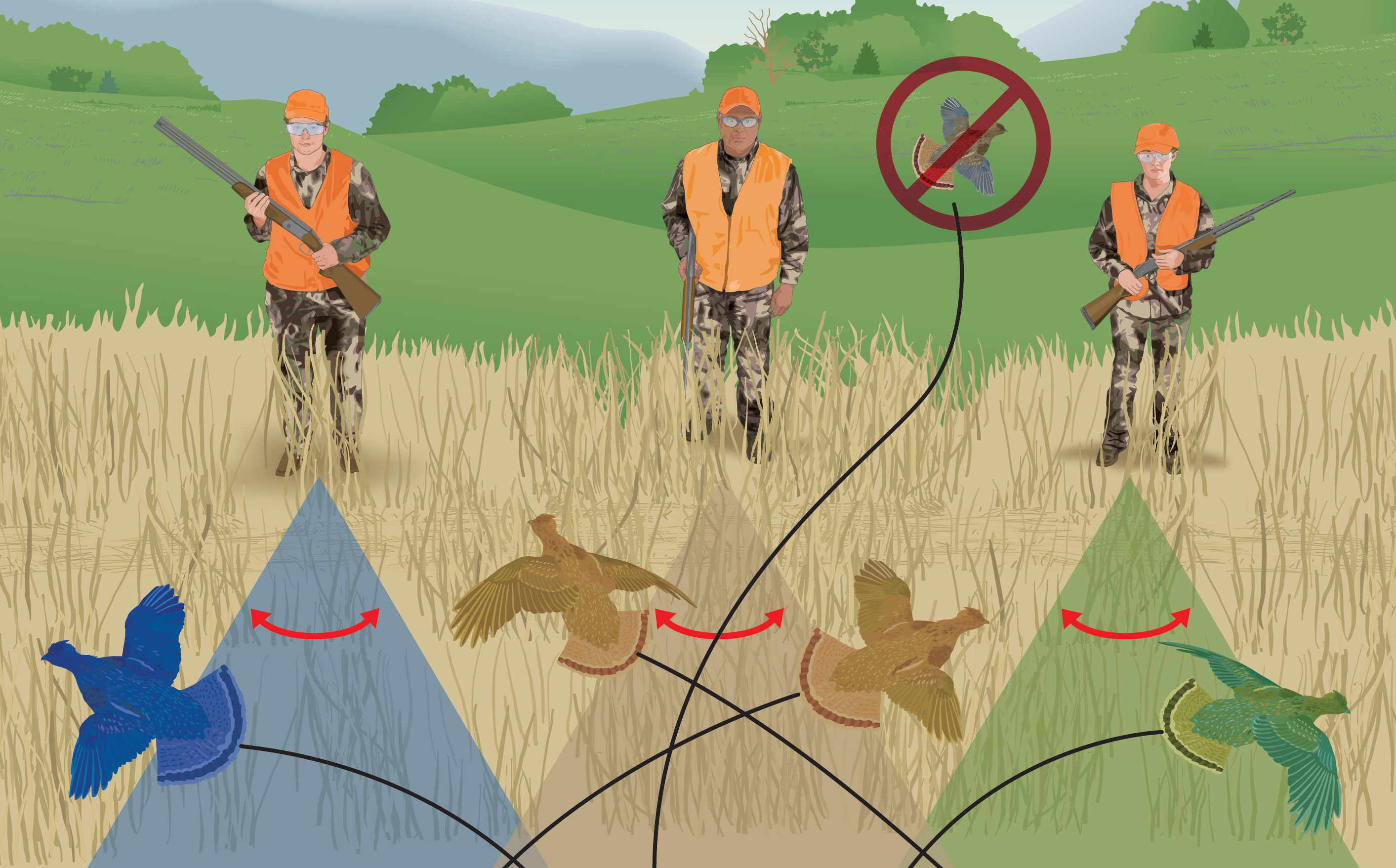
What Is a Safe Zone of Fire?
A safe zone of fire is the area where you can safely shoot a firearm or bow without endangering any person, unintended animal, or property.
In other words, what is at risk of being shot if you miss your target? Or what your projectile could hit on the way to the target or behind it if it passes through.
I like to think of my safe zone as my boundary, or force field, for muzzle control. As I’m walking, stalking, or changing positions, I am always mindful of where my muzzle points. The same thought process occurs when I nock an arrow on the bowstring.
Before I bring the weapon up to aim, I always run through a mental checklist of:
- Is the space between me and the target clear?
- Is the space behind the target clear?
- Is there anything on my left or right that could move into my shooting lane?
Although quality hunter safety courses like those offered by ilearntohunt will provide this conceptual knowledge component, you still have the personal responsibility to maintain this discipline in the field.
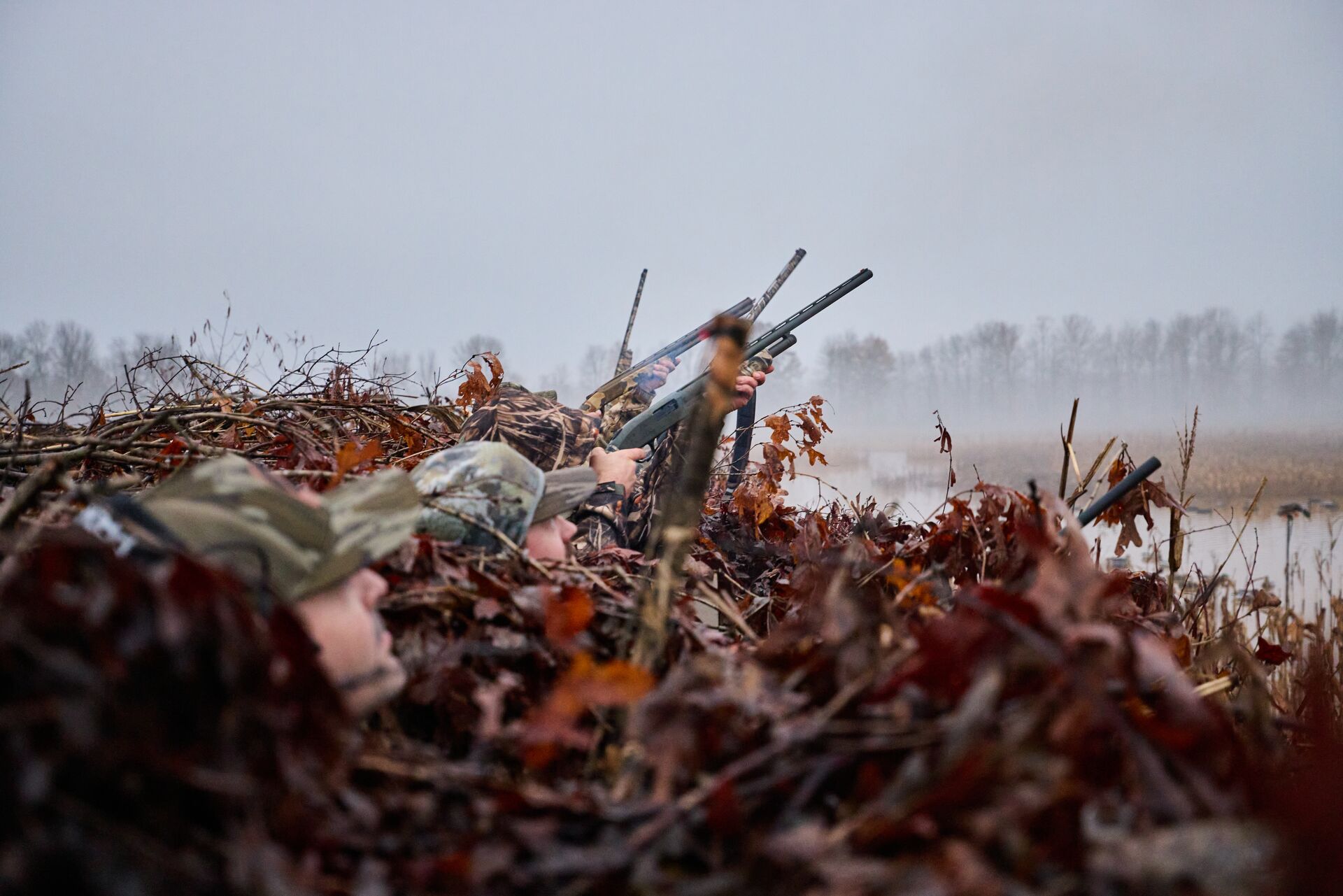
What Are the Factors That Determine Your Safe Zone of Fire?
Three critical factors should be part of your answer when asking, "What is a safe zone of fire?"
These are:
- Visibility: Always clearly identify what is in your zone of fire. Limited visibility due to low light, fog, or dense vegetation can significantly restrict your safe zone of fire. The fundamental rule applies: If you can’t clearly see your target, don’t shoot.
- Angle of Fire: When hunting in groups, each person should maintain a 45-degree angle of fire to the left and right. Bringing your weapon to bear on anything outside that boundary is unsafe.
- Obstacles and Hazards: Trees, rocks, hills, and other terrain features can obstruct your view and mask the presence of another person, building, or livestock.
There are no shortcuts here. It's crucial to think through these things every time you aim your firearm — whether you're a new hunter or a seasoned hunter with years of experience.
The Importance of Situational Awareness
“Target fixation,” also called tunnel vision, describes the intense focus on your target to the point that you do not see or hear anything except your target. Even though hunting is generally a safe outdoor activity, this lack of situational awareness is what leads to accidental shootings.
When you’re hunting, always keep tabs on your surroundings and where other hunters are in relation to your position. If you’re hunting public land, be aware of areas where non-hunters may be.
Group Hunting Dynamics
When hunting in a group, spend a few minutes at the start of the hunt establishing the zone of fire in front of each hunter. Do not assume that because you follow safe hunting protocols, your partners do, either.
A good starting point is:
- Plan the movements and positions for the hunt
- State and agree to each hunter’s shooting zone
- No one shoots at an animal that is outside their assigned zone, even if it means missing a shot
- Agree to hand signals or verbal cues to communicate position changes or when game is spotted
It only takes a few minutes to do this with your group, but it can save you and your buddies from a dangerous situation.
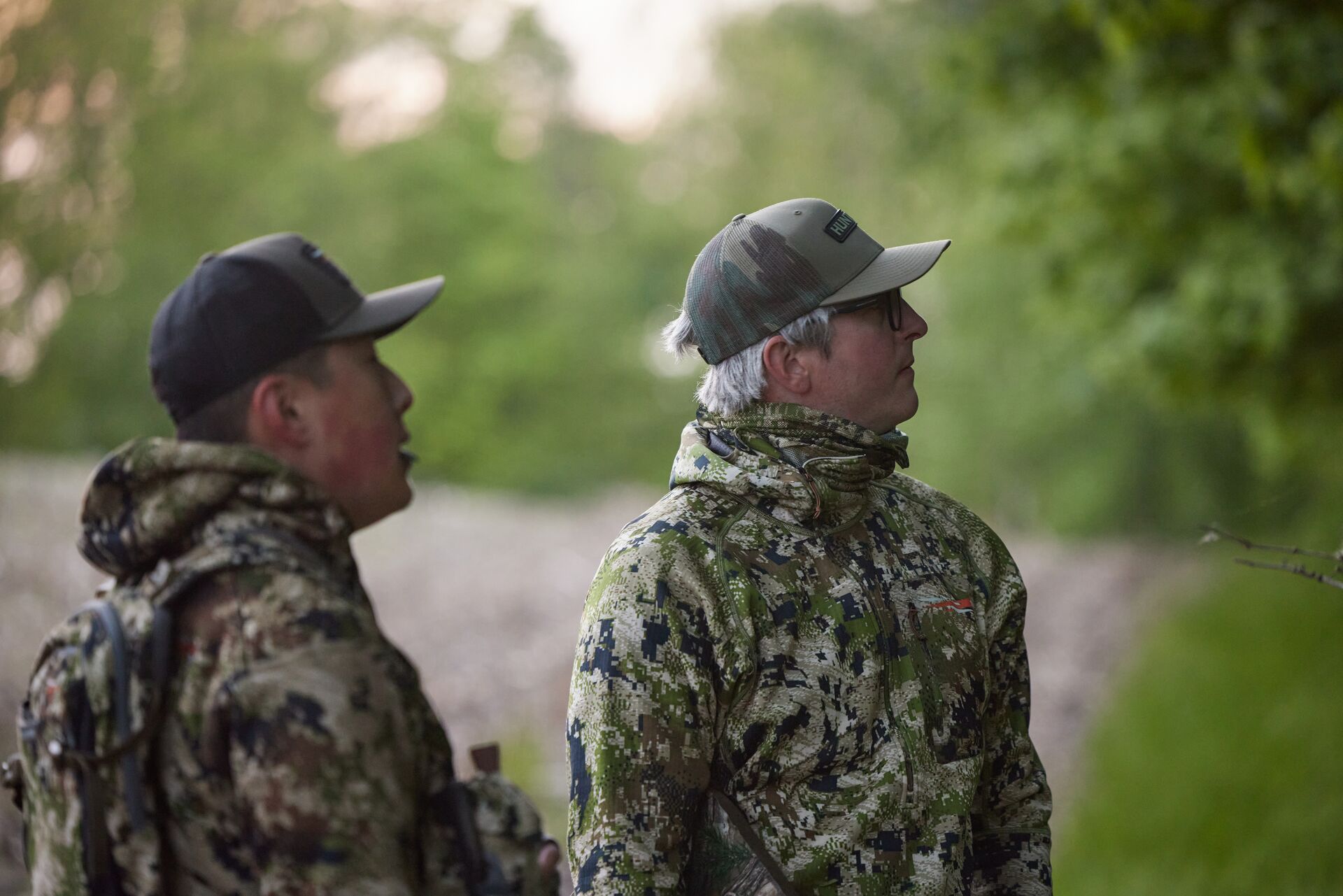
Safety During Drives and Flushes
If you’re participating in an organized group hunt, such as a deer drive or upland bird flush, maintain your shooting zone discipline. Game often moves fast in these situations, and it's easy to let excitement override good judgment.
Remember to never fire at animals outside your designated safe zone of fire and establish clear “no shoot” zones where other hunters are located.
Even if you’re tempted to pursue game or move to a better vantage point, stay in your assigned position until the group leader gives you the signal to move.
In these dynamic group hunts, always wear blaze orange or other high-visibility clothing to ensure all participants are easily identified. Check with your state's fish and game website to see if there are regulations on how much high-visibility clothing you must wear in specific seasons.
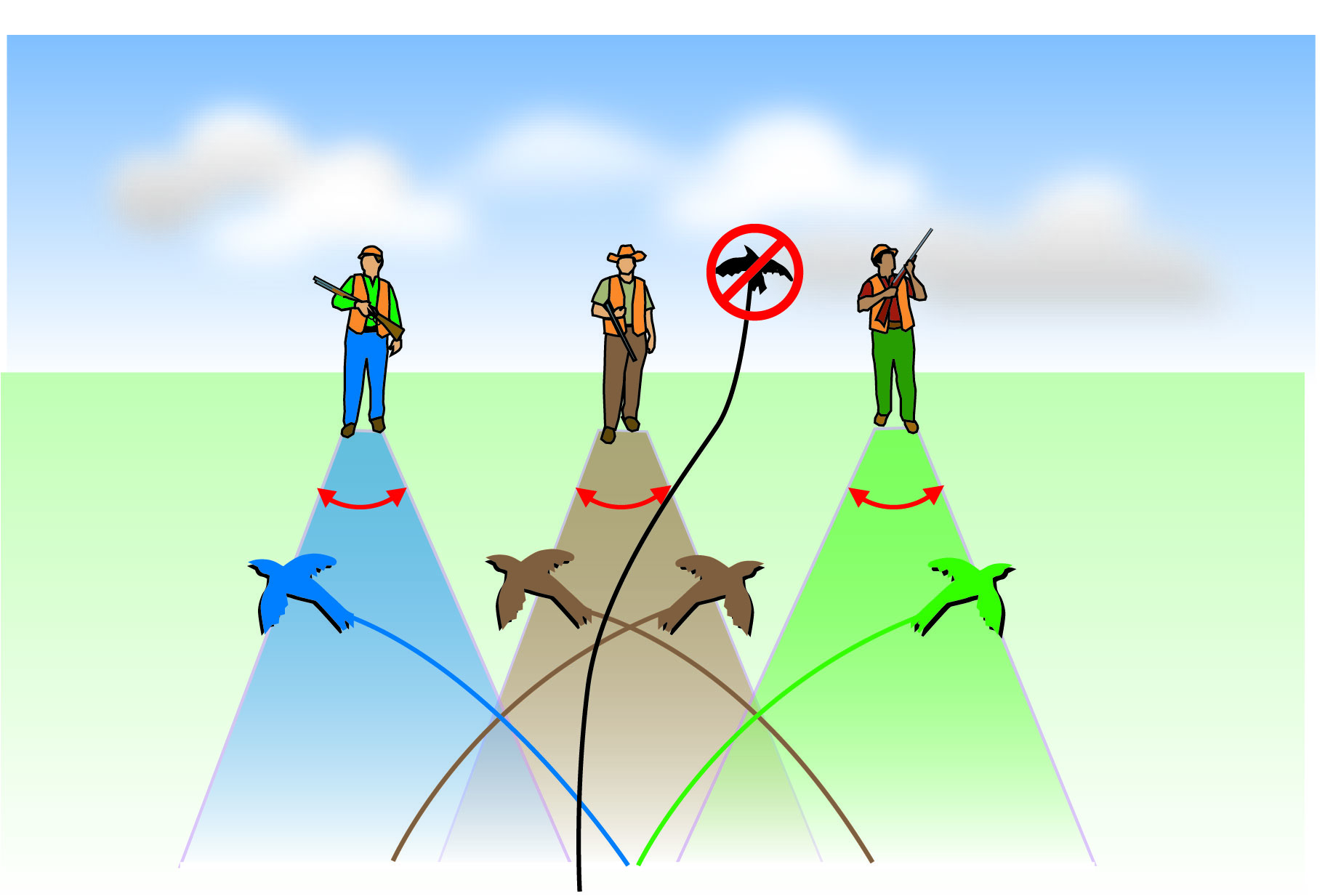
Examples of Unsafe Shooting Scenarios
While most incidents involving hunters shooting others are labeled as accidents, nearly all are due to negligence on the part of the shooter. Negligence is preventable and can be avoided by following the basic guidelines and the fundamentals of firearms safety.
Here are three unfortunately common scenarios:
1. Firing Through or Into Thick Brush When You Can’t Identify Your Target
A quick search for stories about hunters shooting other hunters will fill your browser with unfortunate and preventable incidents where hunters shot at a noise, movement, or what they thought looked like an animal.
Avoid shooting through thick brush when you can't see through it clearly.
2. Shooting Uphill or Downhill Without Knowing What’s Beyond the Target
Bullets travel far and can be lethal at almost any distance. Even though the maximum effective range for most high-power rifles is under 1,000 yards, many are still capable of sending a bullet more than a mile from your muzzle.
3. Cross-shooting Into Another Hunter’s Zone of Fire to Shoot at Moving Game
Upland hunters can get caught up in the excitement of a covey of birds flushing and quickly forget where their partners are. This lack of situational awareness occurs when one hunter retrieves a fallen bird and a second covey flushes. The instinct to shoot may override common sense and safety standards.
Shooting an animal is never worth the risk to someone’s life. Every bullet you fire legally has your name on it, so understand your responsibilities as a hunter and ensure that every trigger press results in a safe shot.
Remember These Tips for Staying Safe While Hunting
Follow these basic safety guidelines when hunting:
- Never point your muzzle outside your assigned fire zone
- Positively identify your target and what is in front of and behind it
- If you’re not 100 percent sure about a shot, don’t take it
- Wear high-visibility clothing
Following basic firearm safety principles and restricting your shots to a known and agreed-upon zone can mitigate the risk of accidents and negligent discharges that can seriously injure or kill others.
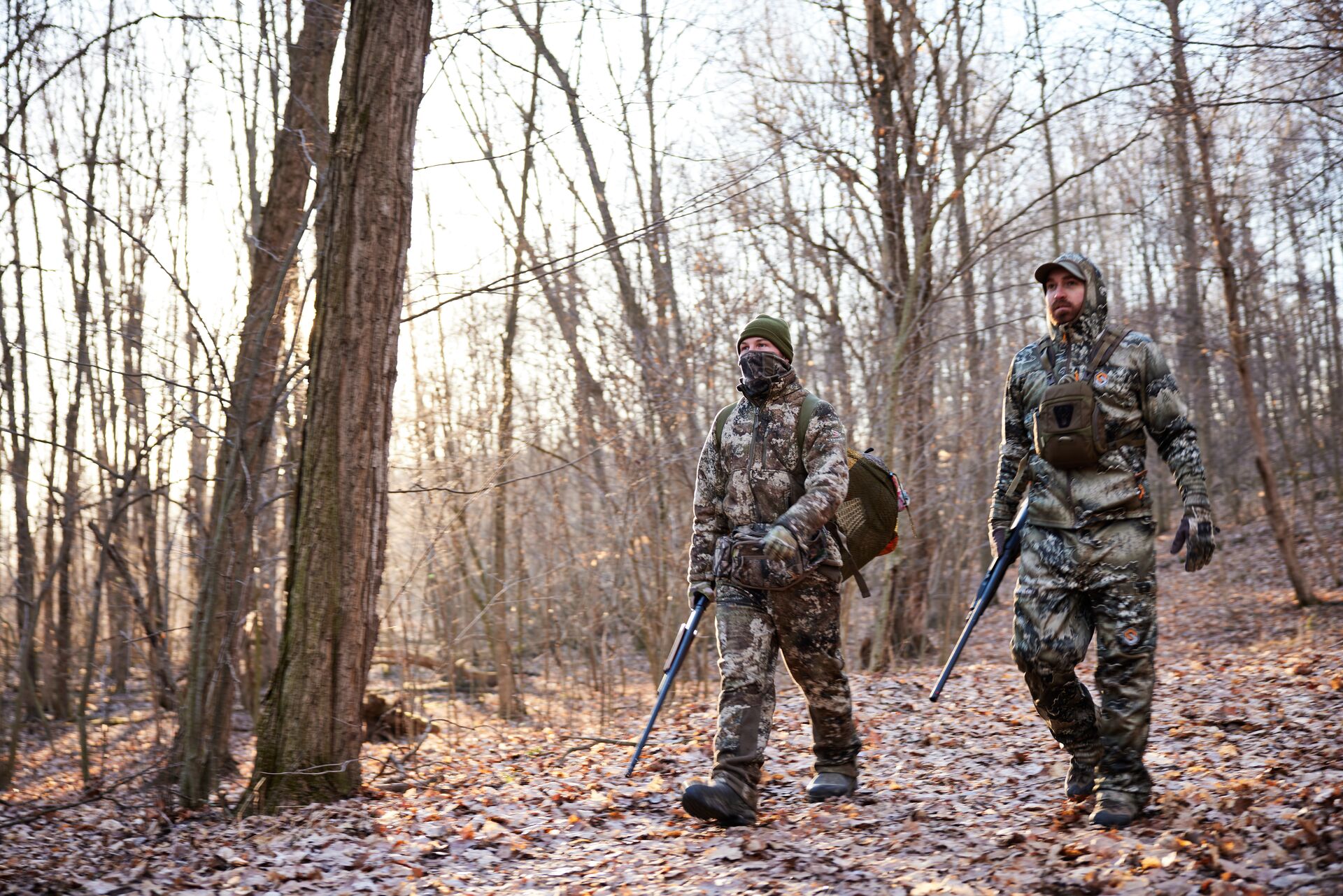
Put Safety First With a Hunter Education Course
So, what is a safe zone of fire? It's more than a set of parameters to use in the field. It’s a mindset you take with you every time you enter your hunting grounds with a firearm.
Whether you’re a novice or an experienced hunter, improve your safety skills with a state-approved hunter education course through ilearntohunt. Each course provides interactive and detailed instructions on vital safety practices and field skills that form the foundation of ethical and responsible hunting. Plus, it's a fun way to learn!
Hunting season is here, so make sure you've met the hunter education requirements for your state.
Choose your course and get started today!

